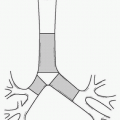Infection Control and Sterile Technique in Interventional Radiology
Daniel Chan
Sterile technique in the context of medical and surgical procedures refers to the process used to prevent contamination of wounds and other sites by organisms that can cause infection. The goal of sterile technique is the prevention of surgical site infections (SSIs).
There are over 51.4 million surgical procedures performed each year. SSIs are the third most frequently reported nosocomial infections which contribute to increased health care costs. Understanding and adhering to sterile technique guidelines plays an integral first-line role in the prevention of SSIs. Prevention of SSIs in the interventional suite focuses primarily on adherence to aseptic practices related to personnel attire, proper hand hygiene, gowning, gloving, prepping, draping, maintaining a sterile field, and sanitation of the interventional radiology (IR) suite.
Sterile technique is the first line of defense in prevention of SSIs and practices have existed since the time of Joseph Lister, the father of modern surgery. Whereas
some sterile technique processes may seem intuitive, an organized process and commitment to accepted practices is imperative. Effective incorporation of sterile technique and infection control practices requires a multidisciplinary and cooperative approach.
some sterile technique processes may seem intuitive, an organized process and commitment to accepted practices is imperative. Effective incorporation of sterile technique and infection control practices requires a multidisciplinary and cooperative approach.
Definitions
1. Surgical site infection
The Centers for Disease Control and Prevention (CDC) define an SSI as an infection at the site of surgery within 30 days of an operation or within 1 year of an operation if a foreign body is implanted as part of the surgery. The CDC has further classified an SSI into either incisional or organ/space. Contamination with an organism is the precursor for SSIs. For most SSIs, the source of pathogens is the endogenous flora of the patient’s skin, mucous membranes, or hollow viscera. Exogenous sources of SSIs pathogens include surgical personnel, the operating room environment, all tools, instruments, and materials brought into the sterile field during a procedure. The most common organisms involved in SSIs are Staphylococcus aureus, coagulase-negative staphylococci, Enterococcus species, and Escherichia coli.
2. Interventional radiology scope—procedures, environments, and modalities
IR procedures can be classified as vascular and nonvascular interventions. Procedures are performed with different imaging modalities, in various environments at the bedside or in procedure suites. Different environments include an ultrasound, computed tomography (CT), or magnetic resonance imaging (MRI) suite, or most commonly an angiographic suite. Multiple imaging modalities are utilized concomitantly, for example, ultrasound to obtain vascular access in the angiography suite. Each specific modality and environment has its unique instruments and special considerations.
Bedside procedures include but are not limited to vascular access procedures, drainage procedures, and biopsies, frequently performed with ultrasound guidance which incorporates the imaging unit and probes within the sterile field. Procedures involving the CT or MRI suites need to take into account the appropriate space needed to maintain a sterile field between the patient and equipment. For example, there should be an assessment to provide appropriate clearance of needles and catheters during scanning. The image intensifier of an angiographic unit or portable C-arm in an operating room or office-based environment is incorporated in the sterile field. Multiple accessory units (e.g., ultrasound, generators) are also within the sterile field including their various cords, probes, and attachments.
3. Procedure classification—sterile and clean procedures
The National Academy of Sciences/National Research Council has divided surgical wounds into four classes: clean, clean-contaminated, contaminated, and dirty. Each confers a different risk of infection.
a. Clean: A procedure is regarded as clean if the gastrointestinal tract, genitourinary tract, or respiratory tract is not entered; if inflammation is not evident; and if there is no break in aseptic technique. Examples include:
(1) Vascular procedures: angiography, angioplasty, thrombolysis, stent and endograft placement, embolization including uterine artery and chemoembolization of liver tumors, central venous access, inferior vena cava filter placement, and transjugular intrahepatic portosystemic shunt (TIPS) revision
(2) Nonvascular procedures: vertebroplasty/kyphoplasty and percutaneous biopsy
b. Clean-contaminated: A procedure is regarded as clean-contaminated if the gastrointestinal, biliary, or genitourinary tract is entered; if inflammation is not evident; and there is no break in aseptic technique. Examples include:
(1) Vascular procedures: TIPS creation
(2) Nonvascular procedures: transrectal or transgastric percutaneous biopsy, percutaneous gastrostomy or gastrojejunostomy tube placement, genitourinary procedures, tumor ablation, liver and biliary procedures
c. Contaminated: A procedure is regarded as contaminated if entry into an inflamed or colonized gastrointestinal or genitourinary tract without frank pus or if a major break in aseptic technique occurs. Examples include:
(1) Nonvascular procedures: presumed infected genitourinary and biliary procedures
d. Dirty: A procedure is regarded as dirty if it involves entering an infected purulent site such as an abscess, a clinically infected biliary or genitourinary site, or perforated viscus. Examples include:
(1) Nonvascular procedures: abscess drainage
Aseptic Technique and Environmental Controls






